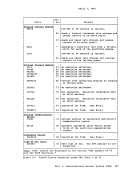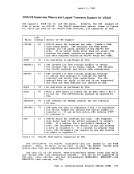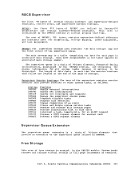FI
April 1, 1981
The
other options of
specified program into storage (if necessary) and
passes control to the specified entry point.
The
other options of
returns
is not in core when
subroutine contains
within that
these references, and may return another entry point
address. To insure a correct address in register zero,
the user should bring such subroutines into core
either by the
All the options of
address of a buffer pool control block in the DCB.
FREE
decreases the use count by one and, if the result is
zero, frees the corresponding virtual storage.
is returned in register 15 if the phase is not found.
All the options of
except
instruction. However, the time value that
does not contain tenths of seconds or hundredths of
seconds: the time is expressed as
control is given to the proper
that an abend has occurred is printed on the terminal
along with the completion code.
All the options of
program interruption types that will cause the exit
routine to receive control.
The
control to the user.
BLDL is an effective
the TTR field of the BLDL list; the K, Z, and user
data fields, as described in
of the
the C field are set to zero.
All the options of FIND are supported. FIND sets the
read/write pointer to the item number of the specified
member.
274 IBM















































































































































































































































































































































































































































